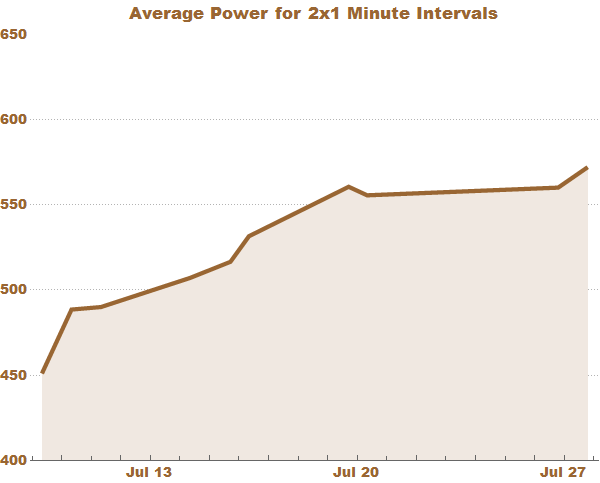Articles...
23 March 2016
Intermuscular Coordination
This is the first in a series of forth-coming articles to discuss the benefits of incorporating an air-braked trainer (an erg) into a cyclists training program.
Hunter Allen recently wrote an article on Functional Threshold Power (FTP) and Indoor Training. He outlines various factors that contribute to the usual drop in FTP associated with riding on an indoor trainer. Here's an excerpt:
As you ride outside on the road, your bike continues to move forward with momentum from the force that you exerted onto the pedals from roughly the 1 o’clock to 5 o’clock position in the pedal stroke. Across the bottom and top of the pedal stroke, the legs have little ability to create any meaningful force against the pedals because of biomechanical inefficiencies in body position due to being seated almost directly above the crank. This lack of resistance to pedal against may even give the legs a micro-rest in each pedal stroke as the momentum of the rear wheel continues moving forward and the legs try to keep up with the rpm's needed to move the crank.
On a rear wheel resistance trainer, there is little to no momentum of the rear wheel. If you stop pedaling the rear wheel comes to an almost immediate stop. Because there is resistance around the entire pedal circle, your legs are not used to having to produce power throughout the entire pedal stroke. As a result of this inefficiency, more strain is put on your cardiovascular system. As a result, this reduces your ability to create the same wattages as outdoors.
Hunter's article informs us on how to progress as a cyclist.
Indeed, after training on a flywheel-based trainer the legs are not trained to produce power at the top and bottom of the pedal stroke. This is true also for outdoor training when the diet is deficient in extensive climbing. However, the amount of momentum on indoor trainers is in general under-stated. An air-braked trainer such as the RevBox Erg provides an absolute minimum of momentum, the rider is provoked to engage throughout the entire circle to achieve a smooth pedal stroke.
A need to use the muscles that bring the foot through the top and bottom pedal positions is the first step to developing these muscles. It is not enough to simply develop strength in these muscles. For example, a cyclist needs resilient tendons, advanced capillary development, and high mitochondrial density. Even with these developments in place, a cyclist still needs the neuromuscular system developed so that the timing of tension and relaxation is perfect. Anything less than perfect synchrony of neuronal firing spells inefficiency. It takes high-quality, deliberate practice to bring a skill to its highest level. Consistent and well-designed training on an erg goes a long way toward reaching these goals.
One doesn't generally pedal in a fully engaged fashion when out and about in the world. Rather this skill is needed to develop other skills. Elite cyclists will vary, both consciously and subconsciously, how muscle groups are recruited at any particular moment. For example, a simple shift in position on the saddle results in changing the muscles being recruited. Changing recruitment patterns allows the athlete to rest tired muscles, to work hard after making a hard jump, and to accelerate efficiently during extensive climbs.

The plot comes from data collected while training on the RevBox Erg. Data points are the average power of 2x60s at 100rpm. Rest 2 minutes between. Done, not maximally, rather to complete the warm-up. There's a 100+ watt gain in 10 days. How? Improved intermuscular and intramuscular coordination. Everything is a skill. One must train from the brain down.
I will continue this article with a comparison of oxygen consumption in the leg muscles of a cyclist trained on an erg to one on a typical indoor trainer.